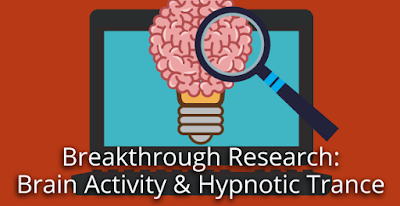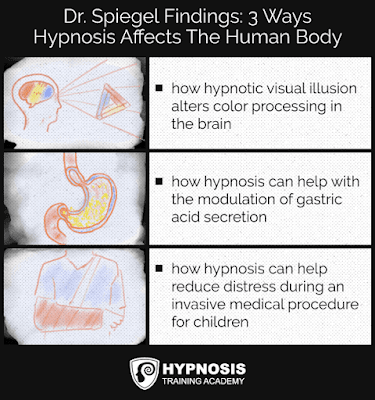It’s the 21st century.
Every other day, there’s news of some fascinating discovery…
Brain implants to reverse paralysis.
Vehicles that can drive themselves.
Facial recognition software for ID confirmation.
It seems like you can’t open a newspaper or browse a news channel without hearing of yet another remarkable breakthrough.
Which is why we were excited about this hypnosis discovery making it into the limelight…
You see, it’s no secret that academics have studied
hypnosis and trance phenomena for more than a century.
But despite their best efforts, they were unable figure out what trance was. Was it a state? Was it a trait? Was it a genetic predisposition?
No matter how hard they tried, they couldn’t find an answer. Even with fMRI scanners that measure brain activity.
In fact, scientists concluded that there was
no detectable pattern in the brain when someone was in a hypnotic trance.
That was until new research carried out by a team working under the legendary Dr. David Spiegel at the Stanford University School of Medicine got to work to set the record straight.
They published the results of their study in the journal
Cerebral Cortex – causing quite the buzz in the hypnosis world because
they confirmed what hypnotists have long suspected…
But before we reveal the details of this breakthrough study, let’s take a quick look at Spiegel’s background.
The Son Of A Clinical Hypnosis Expert
David Spiegel, M.D., is professor and associate chair of psychiatry and behavioral sciences at Stanford University.
He’s one of America’s most respected experts in the clinical uses of hypnosis and is the son of the late Herbert Spiegel, M.D., who was also an expert in hypnosis.
Spiegel’s research has frequently focused on two elements:
cancer and hypnosis. Back in 1983 he did a study looking at in breast cancer patients using hypnosis.
He found that self-hypnosis exercises as part of a group therapy experience had:
“A direct effect in altering the patient’s perception of pain.”
His associations with hypnosis go back even further than that. In 1972, Spiegel
underwent shoulder surgery. Following the 3-hour operation, he refused any painkilling medication.
Instead, Spiegel used
self-hypnosis to control the pain. Given that he had an incision running from the top to bottom of his shoulder, it’s a safe bet that the pain was considerable.
In addition to his work with cancer, Spiegel has studied how hypnosis can be used in other applications.
These include:
Dr. Spiegel’s links with hypnosis and his credibility are beyond question. However, just like everybody else working in the field, there was still something major he wanted to prove…
He knew what hypnosis was capable of doing, but there was something else he wanted to uncover.
Since hypnosis was a change of state, there must also be some type of change in the brain. And there must be a way of seeing this change too.
In 2016, Spiegel and a team of researchers decided to prove their suspicions.
Spiegel’s Study: Brain Activity And Functional Connectivity Associated With Hypnosis
The purpose of the study was to try to identify changes in brain activity during the hypnotic state.
Through this study, Spiegel and his colleagues discovered that some parts of the brain function differently under hypnosis than during normal consciousness.
They also identified brain areas altered during hypnotic trances.
These findings might help explain the intense absorption, lack of self-consciousness and suggestibility that characterize the hypnotic state.
If you’d like to discover more about Dr. David Spiegel hypnosis research findings and how you can use it to control pain and increase someone’s self-esteem? Check out the latest article on HypnosisTrainingAcademy.com now…..




